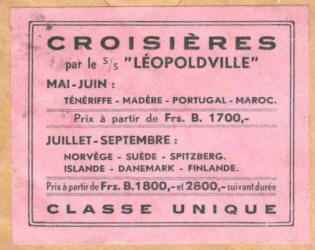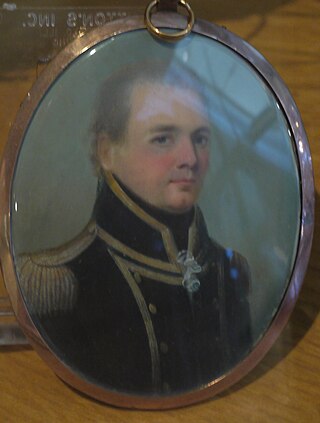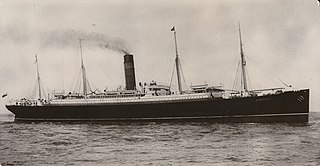
Méduse was a 40-gun Pallas-class frigate of the French Navy, launched in 1810. She took part in the Napoleonic Wars during the late stages of the Mauritius campaign of 1809–1811 and in raids in the Caribbean.

HMS Birkenhead, also referred to as HM Troopship Birkenhead or Steam Frigate Birkenhead, was one of the first iron-hulled ships built for the Royal Navy. She was designed as a steam frigate, but was converted to a troopship before being commissioned.

HMS Orpheus was a Jason-class Royal Navy corvette that served as the flagship of the Australian squadron. Orpheus sank off the west coast of Auckland, New Zealand, on 7 February 1863: 189 crew out of the ship's complement of 259 died in the disaster, making it the worst maritime tragedy to occur in New Zealand waters.

A castaway is a person who is cast adrift or ashore. While the situation usually happens after a shipwreck, some people voluntarily stay behind on a desert island, either to evade captors or the world in general. A person may also be left ashore as punishment (marooned).

SS Léopoldville was a 11,509 GRT passenger liner of the Compagnie Belge Maritime du Congo. She was converted for use as a troopship in the Second World War, and on December 24, 1944, while sailing between Southampton and Cherbourg, was torpedoed and sunk by the German submarine U-486. As a result, about 763 US soldiers and 56 of the ship's crew died.
Neva was a three-masted barque launched in 1813. She made two voyages transporting convicts to Australia. On her second voyage carrying convicts she wrecked in Bass Strait on 13 May 1835. Her loss was one of the worst shipwrecks in Australian history; 224 people died.

SS Valencia was an iron-hulled passenger steamer built for the Red D Line for service between Venezuela and New York City. She was built in 1882 by William Cramp and Sons, one year after the construction of her sister ship Caracas. She was a 1,598-ton vessel, 252 feet (77 m) in length. In 1897, Valencia was deliberately attacked by the Spanish cruiser Reina Mercedes off Guantanamo Bay, Cuba. The next year, she became a coastal passenger liner on the U.S. West Coast and served periodically in the Spanish–American War as a troopship to the Philippines. Valencia was wrecked off Cape Beale, which is near Clo-oose, on the west coast of Vancouver Island, British Columbia, on 22 January 1906. As her sinking killed 100 people, some classify the wreck of Valencia as the worst maritime disaster in the "Graveyard of the Pacific", a famously treacherous area off the southwest coast of Vancouver Island.

Captain John Richards Lapenotière was a British Royal Navy officer who, as a lieutenant commanding the tiny topsail schooner HMS Pickle, observed the Battle of Trafalgar on 21 October 1805, participated in the rescue operations which followed it and then carried the dispatches of the victory and the death of Admiral Nelson to Britain.

RMS Carpathia was a Cunard Line transatlantic passenger steamship built by Swan Hunter & Wigham Richardson in their shipyard in Wallsend, England.

The Carley float was a form of invertible liferaft designed by American inventor Horace Carley (1838–1918). Supplied mainly to warships, it saw widespread use in a number of navies during peacetime and both World Wars until superseded by more modern rigid or inflatable designs. Carley was awarded a patent in 1903 after establishing the Carley Life Float Company of Philadelphia.
SS Assyrian was a cargo ship that was built in Hamburg for German owners in 1914, transferred to British owners in 1920 as war reparations and sunk by a U-boat in 1940. She was launched as MS Fritz, and when she changed owners in 1920 she was renamed MS Assyrian. She had been built as a motor ship but in 1925 she was converted to a steamship and became SS Assyrian.

The action of 13 January 1797 was a minor naval battle fought between a French ship of the line and two British frigates off the coast of Brittany during the French Revolutionary Wars. During the action the frigates outmanoeuvred the much larger French vessel and drove it onto shore in heavy seas, resulting in the deaths of between 400 and 1,000 of the 1,300 persons aboard. One of the British frigates was also lost in the engagement with six sailors drowned after running onto a sandbank while failing to escape a lee shore.
The SS Nerissa was a passenger and cargo steamer which was torpedoed and sunk on 30 April 1941 during World War II by the German submarine U-552 following 12 wartime voyages between Canada and Britain. She was the only transport carrying Canadian Army troops to be lost during World War II.
Two Friends was a medium-sized wooden sailing ship that served the British government for transporting troops to garrisons across the British Empire during the Napoleonic Wars. On 22 October 1805 Two Friends was wrecked on the coast of Cape Breton Island with the loss of three lives.
"How the Mail Steamer Went Down in Mid Atlantic by a Survivor" is a short story that was published in the 22 March 1886, issue of the Pall Mall Gazette by the English investigative journalist and newspaper editor William Thomas Stead. Stead included this editorial comment: "This is exactly what might take place and will take place if liners are sent to sea short of boats".
The Slamat disaster is a succession of three related shipwrecks during the Battle of Greece on 27 April 1941. The Dutch troopship Slamat and the Royal Navy destroyers HMS Diamond and HMS Wryneck sank as a result of air attacks by Luftwaffe Junkers Ju 87 dive bombers. The three ships sank off the east coast of the Peloponnese during Operation Demon, which was the evacuation of British, Australian and New Zealand troops from Greece after their defeat by invading German and Italian forces.

The French schooner Impériale was a 3-gun mercantile schooner-aviso of the French Navy commissioned at Guadeloupe on 23 September 1805. The Royal Navy captured her on 24 May 1806 and named her HMS Vigilant. The Navy renamed her HMS Subtle on 20 November 1806. She wrecked at Bermuda on 20 October 1807.
The Hive Shipwreck is a heritage-listed shipwreck site of the Hive, a former convict transportation ship located approximately 40 metres (130 ft) off Bherwerre Beach, Jervis Bay Territory, Australia. It was added to the New South Wales State Heritage Register on 1 April 2010.
Paragon was launched at Whitby in 1800. Between 1803 and 1805 she served as an armed defense ship protecting Britain's coasts and convoys. She then served as a transport on the 1805 naval expedition to capture the Cape of Good Hope. Next, she returned to mercantile service and in 1814 a French privateer captured her, but the British Royal Navy recaptured her the next day. She sailed to India in 1818 under a license from the British East India Company (EIC), and was wrecked in March 1819 while inbound to Calcutta.

HMS Monkey was launched in 1801 at Rochester. She served in the Channel, North Sea, and the Baltic, and was wrecked in December 1810.











